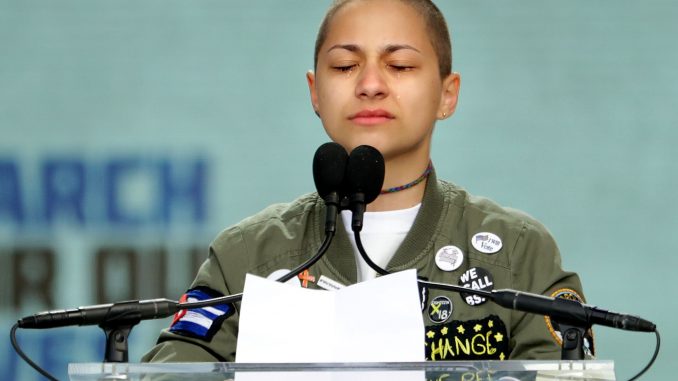
Future history books may recall 2018 as the year of the students’ uprising against violence. We have for many years endured mass murders in the U.S. by gunfire especially, but also bombings and vehicles used as weapons. But with the massacre at Marjory Stoneman Douglas High School in Parkland, Florida on February 14, something changed. Young people said, “Enough is Enough!” Starting with Parkland students, they organized and demonstrated in the millions across the country. Students walked out of 3,000 schools on March 14 and demonstrated coast to coast on March 24 – with the largest demonstration taking place in Washington, D.C . On April 20, the anniversary of the 1999 Columbine High School mass murder, they continued with a new round of nationwide school walkouts.
Young people today are saying that gun violence is threatening their lives every school day and they won’t tolerate that. In the process, many of them – particularly in working class communities of color – are connecting the mass shootings to the violence they face on the streets. They are connecting school violence to the Black Lives Matter revolt against police violence. Memories of the uprisings in Ferguson in 2014 and Baltimore in 2015 – led by young people – are still fresh.
Time will tell, of course, where this movement will go. But for now it has focused a laser beam on the violence of this society. Just as in the 1960s, many young people today believe they can change the world. And they are right. Young people in the ‘60s played leading roles in the struggles against racism and the war in Vietnam. Many soon identified other evils, including sexism and homophobia, and began to organize around those issues.
Violence permeates this society, not just in the culture of mass media, but in our daily lives. And it is more than the violence in the streets. It’s the 18 suicides every day of veterans of the U.S. wars in Iraq and Afghanistan and older veterans from earlier wars. It’s personal abuse of partners, family members, and others by people suffering from unemployment, low wages, and gender, racial, and other discrimination. It’s the violence of poverty itself that sends kids to bed hungry or without a home. Inadequate health care, food deserts, and lead in schools’ drinking water, as well as police violence, affect the working poor, the unemployed, and the victims of discrimination. These are all assaults on our bodies and minds. And so are local pollution and global climate change. More and more young people are beginning to realize that this society is not keeping us safe in many, many ways.
It’s not just a problem in the U.S. Climate change is affecting people, animals, and the environment everywhere, and it will get worse until we stop it. Wars waged by the U.S. government and its allies kill and maim innocent people around the world. The U.S. military has about 800 bases outside the U.S. That’s more than any nation or empire in history. Russia, Britain, and France combined have only about 30 bases today. And the threat of nuclear war may be greater today than ever since the U.S. nuclear attack on Japan in 1945.
The system itself – capitalism – is violent. It is built on the assumption that rich people have the right to force poor people to work for them under terrible conditions and let the bosses profit off of that suffering. If conditions have improved at all, it is because workers have organized and fought back. The legitimacy of violence by the bosses against workers and the poor has been used to justify many other forms of violence.
Some of the young people now organizing against school violence are seeing the connections among different forms of violence, just as young people in the Civil Rights Movement made the connection between racism and other issues in the 1960s. Whether you think mass shootings are the result of weak gun control or untreated mental illness, can you imagine the problem of violence being resolved within a society that values profit over life itself? The more young people and others continue to struggle and connect the problem of mass shootings to other forms of violence, the clearer it becomes that we need to change this entire society that is based on violence and exploitation.

